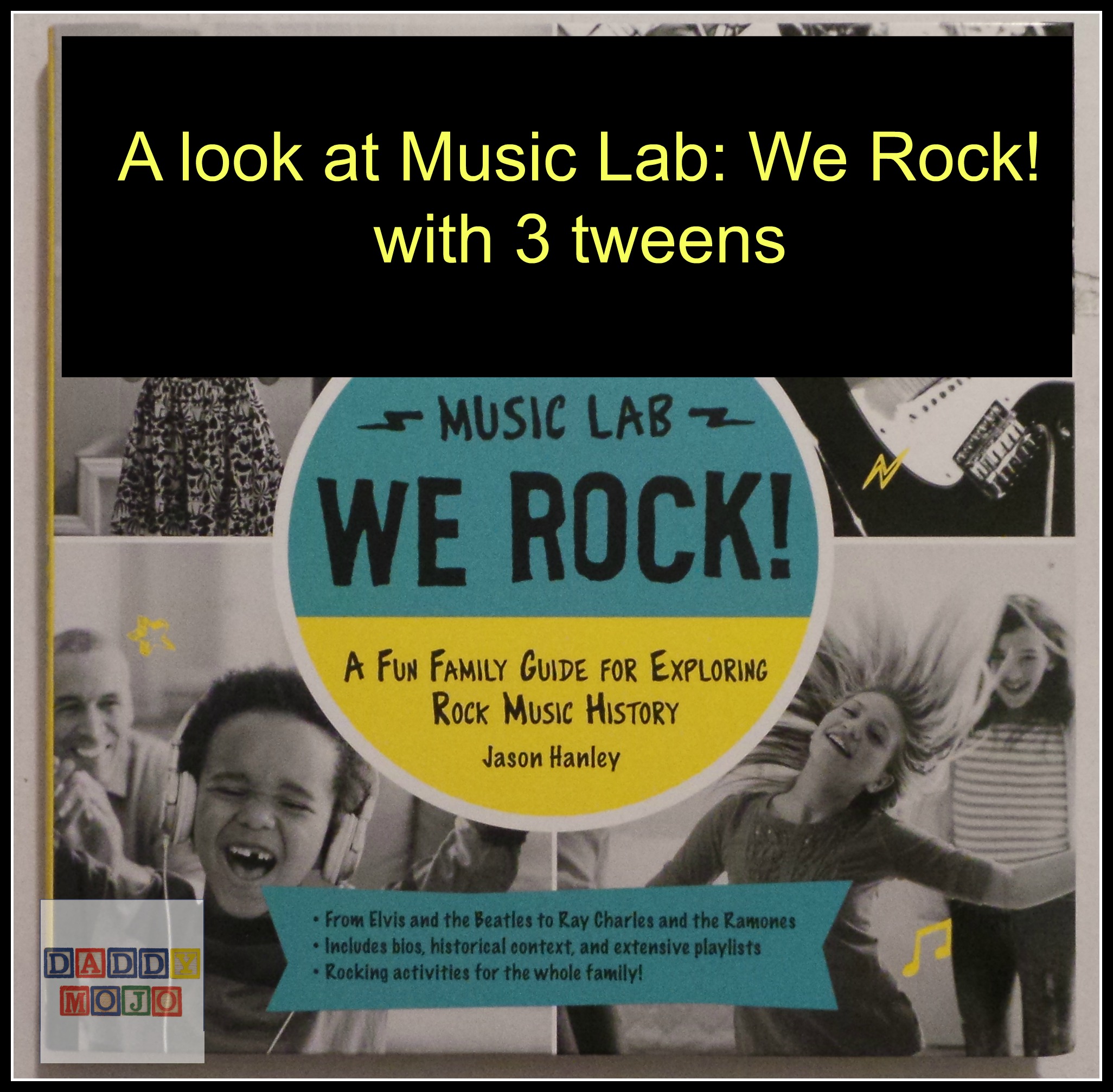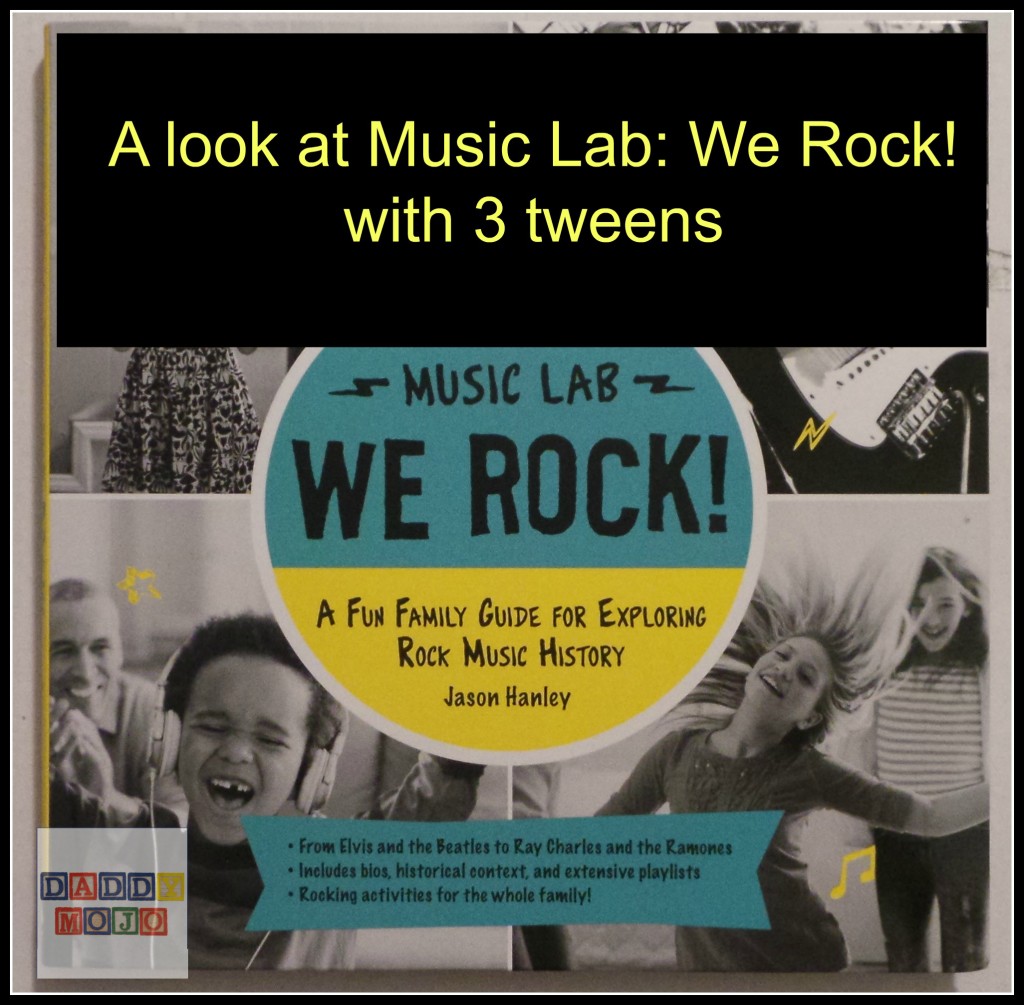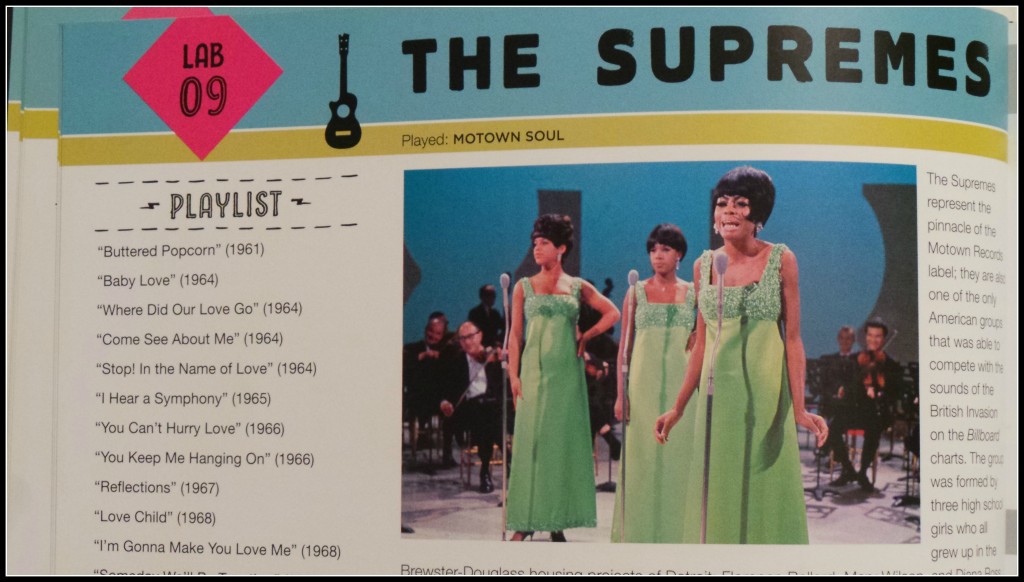Alternate headline: I’m old and today’s music is rubbish next to what I grew up with. Music Lab: We Rock! is a family guide for exploring rock music. It’s a fascinating book that is much better and informative than you think it is. I worked in radio for a number of years, know lots about most genres and still found the book a great read. It was quite the different story when I shared it with a focus group of three girls, aged 10, 12 and 14.
Music Lab: We Rock! is laid out in a deceivingly simple manner. A couple pages of introduction, then it goes into the groups with rock & roll basics, rocking out, deep soul, punk rock, dance music, new rock sounds and new wave. It’s important to point out that the book is not a top 50 ranking of groups. Rather, it’s just a list of groups (and a couple individuals) that have been very influential to the sound of rock/pop music.
For example AD/DC isn’t listed at one of the 52 that are highlighted. However, they are in the appendix as an example of a group that you’ll want to listen to if you want more hard rock. There are many other examples of groups, most likely one of your favorites that aren’t a primary listing, but are in the back of the book or the appendix.
Every group that is highlighted has a group overview of how they met and all of the band members. There is also a bonus trivia paragraph, if you will, about trivia, common connections and other things of note that mark the band’s history. Young songwriters will dig the area where one of their most well known songs is deconstructed. It sets the mood by explaining the song, then tells you what’s happening with the music and the musicians as the song proceeds.
So, I really liked the book, but I knew lots about most of the artists in the book. But the book is intended for children to discover music, listen to it and see where today’s sounds came from. I looked over the book with three young girls to see how many of them knew or liked music from the artists.
A little part of me wilted when the kids didn’t know James Brown, The Byrds, The Clash, The Replacements, Chic, Roxy Music, Depeche Mode and others. A couple takeaways: they call R.E.M “Rem”, asked if Ozzy Osbourne, who was pictured with Black Sabbath was a girl and pronounced David Bowie “David Bow-ie”.
I hesitated when they said that they didn’t know Parliament. They must know some funk, I thought. I asked the oldest two if they knew George Clinton and they immediately said yes. However, they said yes too quickly so I had to interject, “this is not Bill Clinton, the ex-President”, it’s George Clinton. It was with that they changed their answer.
These are great examples of why the book is good for kids and families. You may not like all of the music that’s referenced in the book, but all of the music has some sort of foot print on today’s rock sounds. After my exit interviews I realized why the introduction in the book was so important. While I knew about these groups and why they rocked; today’s kids don’t and in today’s auto tuned world of reality song competitions it’s a good knowledge base to have.
Jason Hanley, the author compiled a Spotify song list that you can listen to for free that goes in the same order as the songs in the book. It’s a great play list that will walk you through 50 years of classic music and a handful of genres. Another plus about the book is that it’s populated with hundreds of photos that show you them relaxing, performing or their fashion.








 Facebook
Facebook Twitter
Twitter Flickr
Flickr GooglePlus
GooglePlus Youtube
Youtube